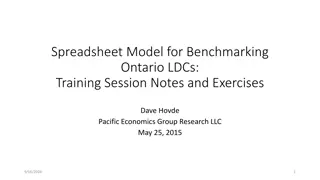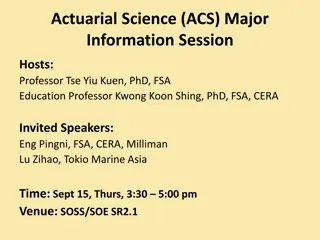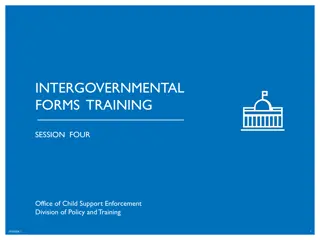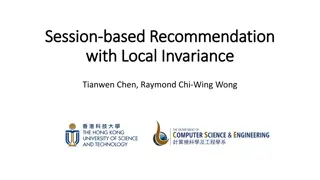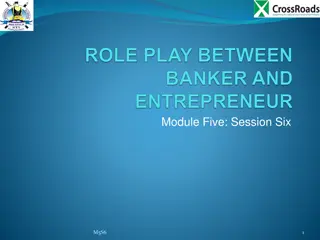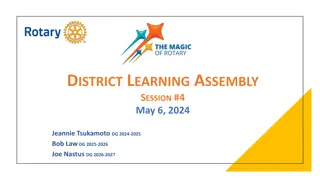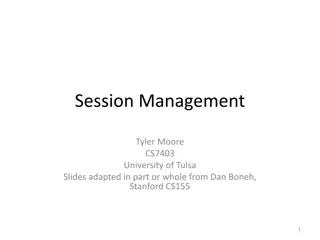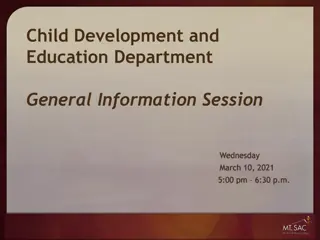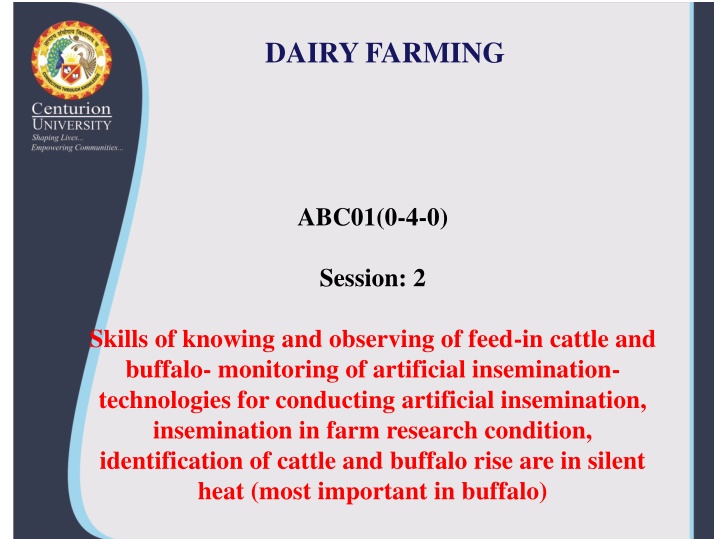
The Estrous Cycle in Dairy Farming
Explore the intricacies of the estrous cycle in dairy farming, including phases like proestrus, estrus, metestrus, and diestrus, along with detailed definitions and stages. Learn about the different types of estrous cycles and key factors like follicular and luteal phases. Discover the essential skills for monitoring artificial insemination and identifying signs of heat in cattle and buffalo.
Download Presentation

Please find below an Image/Link to download the presentation.
The content on the website is provided AS IS for your information and personal use only. It may not be sold, licensed, or shared on other websites without obtaining consent from the author. If you encounter any issues during the download, it is possible that the publisher has removed the file from their server.
You are allowed to download the files provided on this website for personal or commercial use, subject to the condition that they are used lawfully. All files are the property of their respective owners.
The content on the website is provided AS IS for your information and personal use only. It may not be sold, licensed, or shared on other websites without obtaining consent from the author.
E N D
Presentation Transcript
DAIRY FARMING ABC01(0-4-0) Session: 2 Skills of knowing and observing of feed-in cattle and buffalo- monitoring of artificial insemination- technologies for conducting artificial insemination, insemination in farm research condition, identification of cattle and buffalo rise are in silent heat (most important in buffalo)
DEFINITIONS: ESTROUS CYCLE: Reproductive cycle of female, generally defined as period from one estrus to the next. Two phases: Follicular Phase Luteal phase
DEFINITIONS : ESTRUS: Period of sexual receptivity. Commonly referred to as Heat ANESTRUS: Period when female does not experience cycles Occurs during pregnancy, etc.
TYPES OF ESTROUS CYCLE Cycle is categorized by frequency occurrence throughout the year: Polyestrus: Uniform distribution of estrous cycles which occur regularly throughout the year Example: Cattle, Swine, Rodents
PHASES OF ESTROUS CYCLE FOLLICULAR PHASE: Short phase - only 20% of cycle Period from regression of corpus luteum to ovulation Preovulatory follicle Dominant hormone is estradiol
PHASES OF ESTROUS CYCLE LUTEAL PHASE: Long phase - 80% of cycle Period from ovulation to corpus luteum regression Corpora lutea Dominant hormone is progesterone Follicle continue to grow and regress during this phase
STAGES OF ESTROUS CYCLE Four stages: Proestrus Estrus Metestrus Diestrus Follicular phase = Proestrus + Estrus Luteal phase = Metestrus + Diestrus
PROESTRUS Begins when progesterone declines(luteolysis) and ends at onset of estrus Lasts 2 to 5 days Period of major endocrine transition Progesterone dominance to estrogen dominance FSH and LH responsible
Proestrus Building Up Ovarian follicle, with enclosed ovum, increase in size Estrogens absorbed from the follicles into blood stream stimulate increased vascularity and cell growth of tubular genitalia, in preparation for estrus and pregnancy
Estrus Period of sexual receptivity Large increase in estrogen stimulates release of LHRH FSH decreases due to estrogen and inhibin During or shortly after estrus, ovulation occurs due to major surge in LH LH levels increase due toLHRH Estrus stops once ovulation occurs.
Metestrus Corpus Luteum predominant Increase in progesterone, decrease in estrogen Endometrial lining thickens and uterine muscles show increased development.
Diestrus Relatively short period of time between estrous cycles during the breeding season of polyestrous animals No reproductive activity
Prolonged Diestrus CL is fully functional* High levels of progesterone End with luteolysis 10 to 14 days *corpora lutea
Summary ofStages Proestrus= Formation of ovulatory follicle + E2 secretion Estrus = Sexual recepitivity + peak E2 secretion Metestrus = CL formation + beginning of P4 secretion Diestrus = Sustained luteal secretion of P4
Anestrus Long period of inactivity between sexualseasons No regular estrous cycles Ovaries relatively inactive No follicles or CL
The basic pattern of the estrous cycle is the same in all domestic animals, but some specific differences are found in specific parts of the cycle. Some specifics about relevant farm species are summarized in Table Average Reproductive Cycles Species Length of Estrous Cycle Lengthof Estrus Ovulation Length of Pregnancy 18 hr Cow 21 days polyestrus 11 hr after end estrus 282 days 29 hr Ewe 17 days seasonal (fall) near end estrus 148 days Sow 21 days polyestrus 35-45 hr after start estrus 115 days 48-72 hr Mare 21 days seasonal (spring) polyestrus 4-8 days 3-6 day of estrus (1-2 days before endof estrus) 335days
Characteristics of Estrous Cycles Cow Estrous cycle (days) 21 Proestrus (days) Estrus Metestrus (days) Diestrus (days) 3-4 12-18 hr 3-4 10-14
Variation in Cycle Types CL Type of Cycle Follicular Development Ovulation & CLFormation \ Function Cow, Long Spontaneous Spontaneous Spontaneous
Estrous Cycle Fol.Size & CLSize New CL Forming Mature CLPresent Progesterone(P4) Estradiol(E2) Day of Estrous Cycle
Methods of Estrus Detection Tail-painting & use of chalk Use of closed circuit television female activity changes Progesterone tests Vaginal probes Use of teaser animals Chin-male devices Heat-mount detectors Causes ofAnestrus
1 CL CL The may be divided into several phases based on behaviour changes or structural changes in internal & external genitalia. estrous cycle Ovulation Atresia Progesterone CA Estradiol PGF2 FSH LH -7 - 6 - 5 - 4 - 3 - 2 -1 Days Relative to the Gonadotropin Surge 0 1 2 3 4 5 6 7 8 Diestrus Proestrus Estrus Metestrus Diestrus
2 Follicular Phase Proestrus Follicle enlarges Estrogen increases Vascularity of the female reproductive tract increases Endometrial glands begin to grow Estrogen levels peak CL CL Ovulation Atresia Progesterone CA Estradiol PGF2 FSH LH -7 - 6 - 5 - 4 - 3 - 2 -1 0 1 2 3 4 5 6 7 8 Days Relative to the Gonadotropin Surge Proestrus Diestrus Estrus Metestrus Diestrus
3 Follicular Phase Estrus Ovulation 24-48 h after surge of LH Uterine motility high with contractions moving toward oviduct Sperm transport is optimal Cervical mucusvolume increases Allows male to mount Estrogen decreases LH surge occurs
4 Luteal Phase Luteal Phase Metestrus Estrogen low Ovulation in cow Corpus hemorrhagicum present Uterus Contractions subside Endometrial glands continue to grow and become coiled In cattle bleeding occurs FSH increases Triggering growth of follicles CL CL Ovulation Atresia Progesterone CA Estradiol PGF2 FSH LH 4 5 6 7 8 -7 - 6 - 5 - 4 - 3 - 2 -1 0 1 2 3 Days Relative to the Gonadotropin Surge Proestrus Diestrus Estrus Metestrus Diestrus
5 Luteal Phase Luteal Phase Diestrus Progesterone high FSH Increases at some point to cause growth of ovulatory follicle Uterus Secrets fluid but volume gradually decreases Contraction stop CL regresses at the end of this period if female is not pregnant due to PGF release CL CL Ovulation Atresia Progesterone CA Estradiol PGF2 FSH LH -7 - 6 - 5 - 4 - 3 - 2 Days Relative to the Gonadotropin Surge Proestrus Diestrus -1 0 1 2 3 4 5 6 7 8 Estrus Metestrus Diestrus
Estrus in cow and associated featured Hours from the start of estrus Hours 0 6 28 9 18 24 Egg released Life ofegg (6-10 h) Before heat (6-10 h) Standing heat (18 h) After heat (10 h)
Approximate Values for Selected Reproductive Events in Female Domesticated Mammals Lengthof cycle (days) Durationof estrus (hours) Species Approximate time of ovulation Normal breeding season Mean < 10 Range 1 -24 Mean=20.5 Range 17 -23 Cow 30 h after beginning of estrus Allyear Mean < 15 Range 4 -24 Mean=21 Range 18 -22 Buffalo 32 h after beginning ofestrus Allyear






